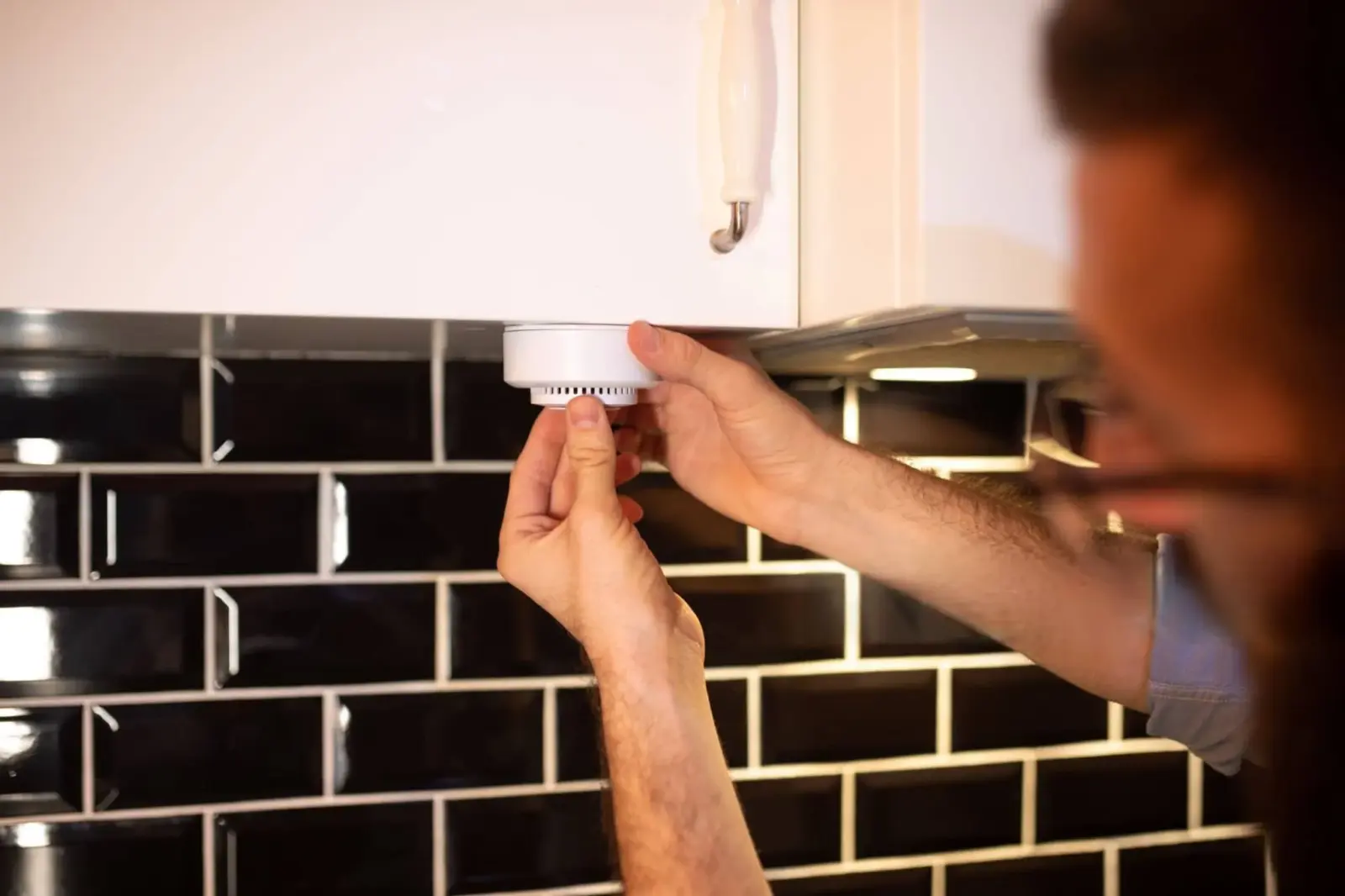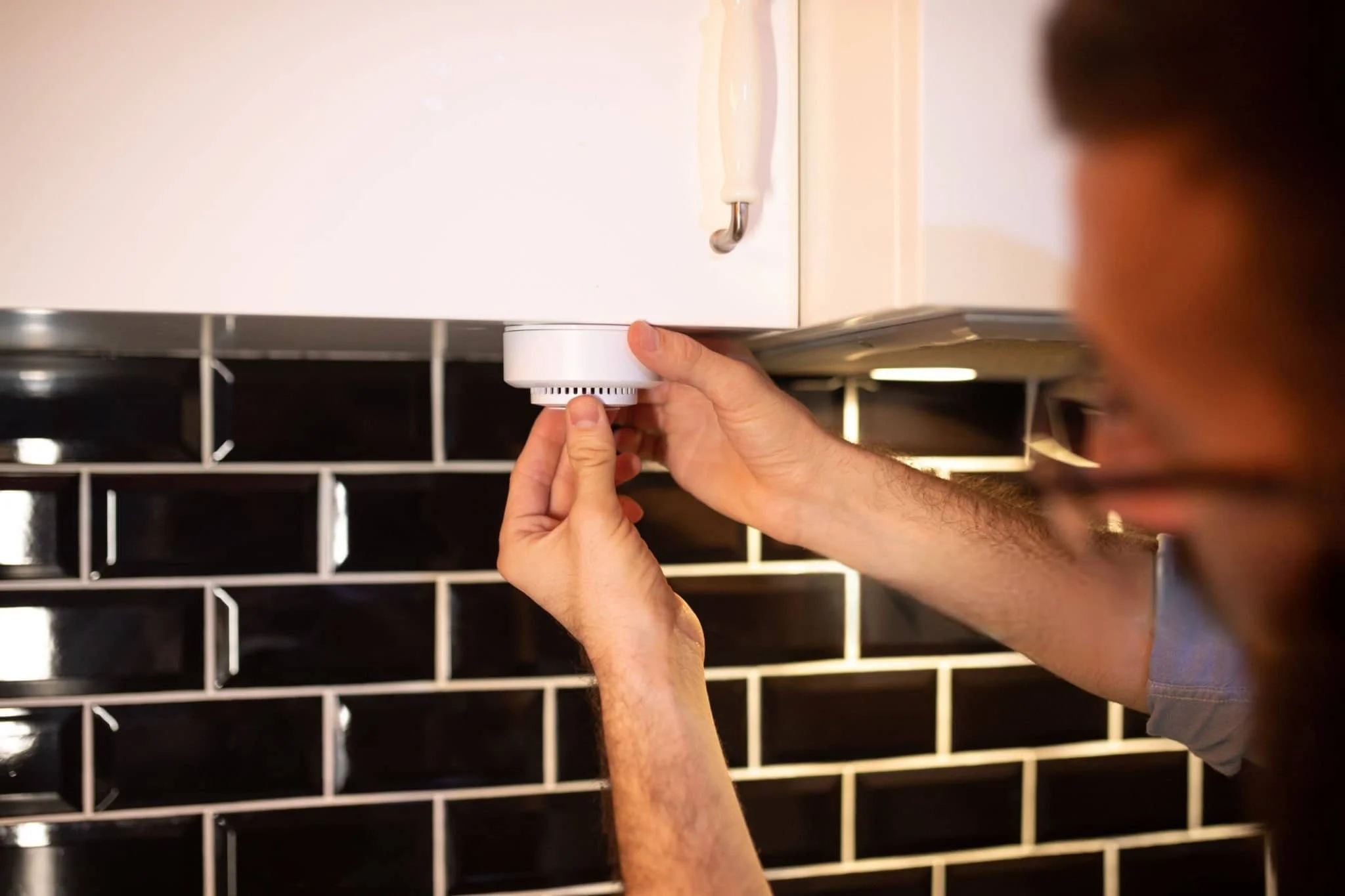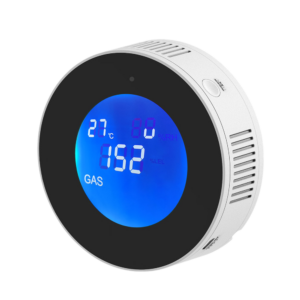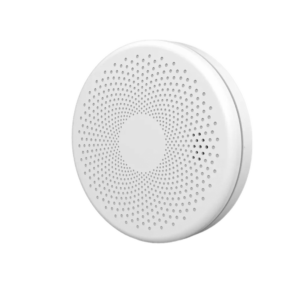대부분의 주택 소유자는 일산화탄소(CO) 경보기를 설치하면 안전하다고 느낍니다.
하지만 사실은 이렇습니다.CO 경보기는 천연가스나 프로판 누출을 감지할 수 없습니다.— 그리고 그 차이는 가정의 안전에 큰 변화를 가져올 수 있습니다.
This guide breaks down what each type of alarm really does, why gas leaks are still dangerous even with a CO detector, and how to build a full-coverage protection system for your home.

일산화탄소 경보기가 실제로 감지하는 것
일산화탄소는무취, 무색, 무미의 가스produced by incomplete combustion — from furnaces, gas stoves, fireplaces, or car engines. Because it gives no warning smell, a CO alarm is essential for detecting it early.
CO alarms use electrochemical sensors that react only to carbon monoxide molecules. That means they’re천연가스, 프로판, 부탄에 대한 지식이 부족함— 주로 메탄이나 탄화수소로 구성된 가스.
If you’ve ever noticed a strange fuel or “gasoline-like” odor, that’s not CO — it’s likely냄새제(메르캅탄)와 혼합된 메탄누수를 빨리 알아차리는 데 도움이 되도록 공공 서비스 회사에서 추가한 제품입니다.
일산화탄소 경보기가 천연가스나 프로판을 감지할 수 있나요?
간단히 말해서:no.
일산화탄소 경보기는 천연가스, 프로판 또는 기타 가연성 가스를 감지할 수 없습니다.
그 이유는 다음과 같습니다.
| 알람 유형 | 감지합니다 | 일반 가스 | 목적 |
|---|---|---|---|
| 일산화탄소 경보 | 일산화탄소 | CO | 연소 부산물로 인한 중독에 대한 경고 |
| 가스 누출 감지기 | 메탄, 프로판, 부탄 | CH₄, C₃H₈ | 점화 전 연료 누출 경고 |
| 연기 경보기 | 연기 입자 | — | 화재 또는 과열 경고 |
CO 감지기 및 가스 감지기 사용다양한 감지 기술.
CO 경보기는 센서 플레이트 내의 화학 반응에 의존하고 가스 누출 경보기는 다음에 의존합니다.반도체 센서(MQ 시리즈)공기 중의 가연성 가스에 반응합니다.
따라서 귀하의 집에서 사용하는 경우천연가스, 프로판 히터 또는 가스 온수기, 당신은 필요합니다둘 다— CO 경보기and전용 가스 누출 경보기.
일산화탄소 경보기가 있어도 가스 누출이 여전히 위험한 이유
Gas leaks don’t just waste energy. They can cause fires, explosions, or even asphyxiation if the gas displaces oxygen in enclosed spaces.
일반적인 누수 지점은 다음과 같습니다.
- 주방(가스 스토브, 오븐)
- 지하실이나 차고(난로, 온수기)
- 세탁실(가스 건조기)
- 다용도실(파이프와 밸브)
도전은?
이러한 공간은 종종일산화탄소 경보기가 설치되어 있지 않습니다— 위험한 사각지대를 남기게 됩니다.
거기가 바로스마트 WiFi 가스 감지기들어오세요.
그들은 지속적으로 공기 중 메탄이나 프로판을 모니터링하고 수준이 상승하면 보냅니다.앱 즉시 알림당신이 멀리 있을 때에도.
사각지대를 남기지 마세요:일산화탄소 경보기는 연료 가스를 감지하지 않습니다. AWiFi 가스 감지기당신이 부재중일 때에도 일찍 알림을 받을 수 있습니다.
일산화탄소, 연기, 가스 누출 경보기의 차이점은 무엇입니까?
It’s easy to confuse them, since they’re often installed side by side. But each has a distinct purpose.
| 알람 유형 | 감지합니다 | 일반적인 위치 | 예시 장치 |
|---|---|---|---|
| 연기 경보기 | 화재 및 연기 입자 | 복도, 침실 | 연기 및 일산화탄소 감지기 – GasNet-CM |
| 일산화탄소 경보 | 일산화탄소 | 수면 공간 근처 | GasNet-CM 듀얼 센서 |
| 가스 누출 경보 | 메탄, 프로판 | 주방, 난로 또는 지하실 | WiFi 천연가스 감지기 – GasNet-S4 |
각 유형은 다른 위험을 포함합니다.
그리고 통합되면스마트 홈 시스템, they can all connect to your phone or smart speaker — giving you real-time updates no matter where you are.
집을 보호하는 가장 좋은 방법 - 두 가지 유형을 함께 사용하세요
가장 안전한 집에서 사용다층 보호.
- 연기 및 일산화탄소 감지기(좋다__LT_무시_7_0__-CM) 화재와 일산화탄소 축적을 방지합니다.
- WiFi 가스 누출 감지기(좋다__LT_무시_7_0__-S4) 점화 전에 메탄이나 프로판 누출을 감지합니다.
- 함께 그들은 제공합니다24시간 연중무휴 스마트 모니터링— 스마트 밸브 시스템과 함께 사용하면 가스 공급을 자동으로 차단할 수도 있습니다.
집에 가스 누출 경보기를 설치해야 하는 곳
적절한 배치가 모든 차이를 만듭니다.
- 천연가스(메탄)상승 - 감지기 설치천장 근처가스 자원과 가깝습니다.
- 프로판싱크대 - 감지기 설치바닥 근처LP가스를 사용하는 지역에서.
- 통풍이 잘 안되는 구석이나 장소는 피하세요.
- 매달 배터리를 점검하고, 센서가 오래되면 5~7년마다 장치를 교체하세요.
더 자세한 배치 규칙은 다음을 참조하세요.NFPA 720 일산화탄소 및 가연성 가스 감지 표준.
FAQ: 가스 누출 및 일산화탄소 경보에 대한 빠른 답변
일산화탄소 경보기가 가스 누출을 감지할 수 있나요?
아니요. 일산화탄소 경보기는 불완전 연소로 인해 발생하는 일산화탄소만 감지합니다.
그들은 그렇게 한다not천연가스, 프로판 또는 기타 연료 가스를 감지합니다.
이러한 경우에는 다음이 필요합니다.전용 가스 누출 경보기위험이 커지기 전에 메탄이나 프로판을 감지하도록 설계되었습니다.
화재 경보기는 가스 누출을 감지합니까?
아니요. 화재 경보기는 가연성 가스가 아닌 연기 입자와 열을 감지하도록 만들어졌습니다.
집에서 가스 스토브, 히터 또는 퍼니스를 사용하는 경우 설치하는 것이 가장 좋습니다.가스 누출 감지기조기 경고를 위해 해당 기기 근처에 두세요.
가정용으로 가장 좋은 가스 누출 경보기는 무엇입니까?
를 찾아보세요WiFi 지원 천연가스 감지기메탄과 프로판을 모두 감지하고 실시간으로 전화로 알림을 보낼 수 있습니다.
다음과 같은 모델GasNet-S4 WiFi 천연가스 감지기주방, 지하실, 다용도실에 대한 즉각적인 알림과 안정적인 서비스 범위를 제공합니다.
일산화탄소와 가스 감지기가 둘 다 필요한가요?
네. 일산화탄소와 연료 가스는 전혀 다른 위험 요소입니다.
A CO alarm protects against carbon monoxide poisoning, while a gas leak alarm prevents fire or explosion risks from methane or propane leaks.
둘 다 사용하면 다음과 같은 이점이 있습니다.완벽한 가정 보호.
가스 누출 경보기는 어디에 설치해야 합니까?
For천연가스(메탄), 알람을 설치하다벽 위나 천장 근처메탄이 상승하기 때문입니다.
For프로판(LP가스), 그것을 놓다벽이나 바닥 근처 낮은 곳프로판은 가라앉기 때문이죠.
누수가 발생할 가능성이 가장 높은 주방, 다용도실, 난방 시설에 집중하세요.
최상의 성능을 위해 매달 감지기를 점검하고 테스트하세요.
보호 유지 - 하나의 알람 유형에 의존하지 마세요
Even if your CO alarm is working perfectly, it can’t sense a gas leak before it becomes dangerous.
설치 중전용 WiFi 가스 감지기CO 및 연기 경보기와 함께 전체 스펙트럼 보호 기능을 제공하여 마음의 평화를 누리세요.
💡전문가 팁:항상 지역 유틸리티를 확인하세요천연가스 안전 지침적절한 환기 및 누출 대응 절차를 위해.
Protect your home from both gas and carbon monoxide leaks with our dual smart detector set. Enjoyup to 10% offfor a limited time — peace of mind has never been this affordable.
Shop the Black Friday Bundle →

